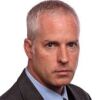On October 1, from a corner suite on the 32nd floor of the Mandalay Bay Resort and Casino in Las Vegas, a 64-year-old gunman unleashed a hail of gunfire on a crowd of 22,000 people attending a county music festival. His fusillade lasted roughly 10 minutes. He killed 58 people and injuried at least 527 others.
The attack in Las Vegas is not only the largest active shooter event in U.S. history, it is a turning point for how law enforcement and private security must view the protection of large crowds of people in enclosed spaces.
What steps could have been taken to mitigate and/or prevent this attack? What can be done to fortify soft targets like large gatherings in public spaces?
The experts I spoke with made these suggestions to improve protection of large crowds in enclosed spaces:
1. Barriers around outdoor venues
Kyle Lamb, who spent 15 years with U.S. Army Special Operations and is the founder of Viking Tactics, said, “Outdoor venues could use Texas barriers around the perimeter of the event. We don’t want to turn into Iraq, but that is one way to improve security.”
2. Undercover officers in the crowd
Lamb also said putting a few undercover officers in the crowd is a good option: “If a few people would have been carrying in that crowd, that may have helped.”
3. Pre-operational surveillance
Fred Burton, Chief Security Officer at Stratfor and former State Department counterterrorism agent, says one of the layers of security that can potentially be improved is simply being better at picking up the subtle signs of an impending attack.
“There’s no doubt that there was some degree of preoperational surveillance,” Burton said. “How long was that attack cycle? Could that preoperational surveillance have been picked up on? I think this is again one of these game-changing events where we have to get more data and figure out if there’s some protective security and intelligence workarounds that might have assisted here.”
4. Counter-sniper training, capability
Kevin Gors, retired Oakland (Calif.) police officer and founder of security company Seal~Mar, says that the first step to prevention of an attack is believing an attack can actually occur.
“As we say in SF: ‘Anything, Anytime, Anyplace,’ and that thought process has to be attributed to our enemies as well,” Gors said.
We need to think like the bad guys and look at even the most benign targets as vulnerable, taking seriously the task of hardening them.
Gors believes that training officers in counter-sniper doctrine related to identifying where the sniper is located and employing shot-tracking technology at events are two ways to more rapidly identify the shooter’s location and speed interdiction response.
“At minimum, knowing this venue had this overwatch capability and you’re thinking like the bad guys, one of the things you have is at least one officer on the scene with some sort of counter-sniper experience or education that’s going to be able to – in that situation from ground level – identify where those shots are coming from. A counter-sniper guy could have been doing it real time and directing people to exactly where those shots were fired from,” Gors said.
“I don’t know how many police departments have officers trained in counter-sniper activities,” Gors said. “What I do know – if you look at it from our point of view – if you have snipers, then you also need to train them to be counter-snipers. And so you should have people with that experience that you can use as part of your package in that [type of] venue.”
5. Direct civilians to take cover
Gors also had some advice for security and law enforcement on directing civilians who may come under fire at a future event.
“I remember some sage words from a Senior NCO combat veteran, ‘When you stop moving, you stop moving.’ The point is that a moving target is significantly more difficult to hit than one not moving. Moving to cover is more effective yet. So, training for all responsible for providing security at an event should be if shots are fired, move! Don’t drop and try to cover. Move to actual cover, not to concealment. Stay there until it’s safe to move again,” Gors said.
6. Expand bag checks
Aaron Cohen, a former member of Israel’s elite special forces unit Sayeret Duvdevan – and founder of operational training and safety apparel company Cherries – says that at least for buildings like Vegas casinos, it is all about bag checks.
“Expand bag checks,” Cohen said. “Have trained screeners at the entrances a couple of days prior to the event where you’re going to have large scale masses of people say in a parking lot, like we saw with this concert. Anyone who does have a weapon, they have to have paper for the weapon. And if they do have papers for the weapons, they need to be scrutinized further. There’s a difference between carrying a personal weapon, carrying a competition weapon and carrying 30 weapons into a hotel. Red flags, right? Just check some bags.”
7. Layered security
Cohen also said that the approach to security for these kinds of events needs to be a layered one.
“You can’t get total security, so by layering you get closer to it. The goal of Israeli-styled security is to achieve total safety, but because we know it can’t be achieved, we’ve deployed multilayers so that it would take a multi-failure event for a shooter to reach its target. Every layer would have to fail. Spotter-sniper, layer. Bag checks, layer. ID checks, layer.”
The threat is constant (and constantly changing)
The attack in Las Vegas is a stark reminder that large gatherings of people in confined spaces such as concerts, festivals, celebrations and parades are soft targets. We must find ways to harden these soft targets. No event is too big or too small. Look at the high ground.



